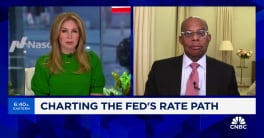After reacting strongly to Hurricanes Harvey and Irma with a four-point drop in September, the Housing Market Index (HMI) regained its footing in October. The National Association of Home Builders (NAHB) says the HMI, which measures its new home builder member's attitudes toward the new home market gained four points this month, reaching 68, its highest reading since May. Analysts had expected the index, which NAHB cosponsors with Wells Fargo, to remain unchanged from September at 64.
"This month's report shows that home builders are rebounding from the initial shock of the hurricanes," said NAHB Chairman Granger MacDonald. "However, builders need to be mindful of long-term repercussions from the storms, such as intensified material price increases and labor shortages."
Derived from a monthly survey that
NAHB has been conducting for 30 years, the NAHB/Wells Fargo Housing Market
Index gauges builder perceptions of current single-family home sales and sales
expectations for the next six months as "good," "fair" or "poor." The survey
also asks builders to rate traffic of prospective buyers as "high to very
high," "average" or "low to very low." Scores for each component are then used
to calculate a seasonally adjusted index where any number over 50 indicates
that more builders view conditions as good than poor.
All three HMI components gained ground in October. Both the component gauging
current sales conditions and the one charting sales expectations over the next
six months increased 5 points, reaching 75 and 78 respectively. Meanwhile, the
component measuring buyer traffic ticked up a single point to 48.
Regional scores for the HMI are reported as three-month moving averages. The index for the South rose two points to 68
and the Northeast rose one point to 50. Both the West and Midwest remained
unchanged at 77 and 63, respectively.
"It is encouraging to see builder confidence return to the high 60s levels we saw in the spring and summer," said NAHB Chief Economist Robert Dietz. "With a tight inventory of existing homes and promising growth in household formation, we can expect the new home market continue to strengthen at a modest rate in the months ahead."







